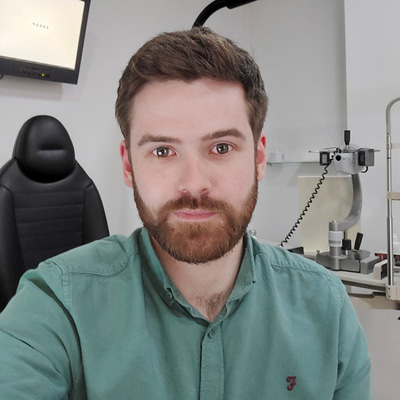- OT
- Life in practice
- Practitioner stories
- Planning ahead
Locum optometrist guide
Planning ahead
From route planning to studying referral pathways, OT finds out how locum optometrists can lay the groundwork for a successful day in practice

14 April 2023
Flexibility is a cornerstone of locum working – the fact that few days are the same is a key attraction for many locum optometrists.
However, in the face of a varied workload, a constant approach to preparing for a practice visit can help optometrists to fit seamlessly into different practice environments.
Many locums have refined their routines and the contents of their kit bag over several decades – adjusting to different locations, practice equipment and variations in referral guidelines.
OT asked locum optometrists for their tips on the planning and organisation that is required to be an asset to a diverse range of practice teams.
First impressions
For locum optometrist and AOP Councillor, Kristen Cottier, the value of preparing for a day in practice can be summed up simply.
“You only make a first impression once,” he said.
Cottier, who has eight years of experience as a locum, double-checks his equipment bag the night before he is due to work in practice.
“I like to make sure everything is complete and working. I also like to access the booking site and confirm that I am still booked in,” he shared.
Cottier added that he will also confirm that the location has not changed, as this has happened to him in the past.

“Some places only accept apps and others cash so keeping a ready bag of change is essential,” he said.
Locum optometrist, Sam Phillips, highlighted the value of preparation when visiting a practice for the first time.
“Preparation for locum work in a new practice is very important to reduce the likelihood of issues occurring which may affect your efficiency,” he shared.
Phillips recommended preparing important documents (such as DBS checks) ahead of a practice visit.
If there is time, arrange a practice visit before the first locum session.
“Make sure to agree start and end times as well as test times and confirm roles you might be expected to do,” he said.
You only make a first impression once
He added that it is important for the practice to check that the locum has the appropriate accreditation if they are expected to carry out minor eye conditions services appointments.
“Another important point is to check local referral protocol if you are working in an area you are unfamiliar with,” Phillips said.
Ahead of their first session in practice, locum optometrists should find out information about practice staff and their roles as well as practice management software.
Hit the ground running

“I try to visit the practice before the day to see how it’s laid out and meet the staff, see what equipment they have and ask any questions I might have,” she said.
Rushton added that it is helpful if the practice has a locum pack – with information such as local referral pathways and computer log in details.
She emphasised that preparation is particularly important for locum optometrists.
“Preparation is key because as a locum you’re expected to hit the ground running from 9am as a replacement for the regular optometrist,” Rushton observed.
AOP Councillor and locum optometrist, Francesca Marchetti, shared with OT that she will always call a new practice before she visits to introduce herself.
“If it is a practice with software that I have never used before I often ask if the first appointment can be booked out so that I can familiarise myself with the system,” she said.
Marchetti asks about appointment times, whether she has contact lens patients booked in and if she will be using a phoropter head or a trial frame.
Preparation is key because as a locum you’re expected to hit the ground running from 9am
She also checks whether there is a fundus camera or optical coherence tomography device – and if so, whether the locum optometrist or another staff member operates it.
Locum optometrist, Priya Patel, prefers to arrive around half an hour before her first clinic starts.
Before attending a practice, she will research the local referral pathways.
“With many referral systems online now, I like to ensure I have been added to their online referral system so I am prepared for any clinical presentation,” Patel said.
Patel arrives in practice around half an hour before her clinic starts. This gives her sufficient time to introduce herself to staff, familiarise herself with the room and clean equipment as well as ensuring that her retinoscope and ophthalmoscope are fully charged.
She added that if a locum optometrist is rushing to get ready after arriving shortly before the first appointment, it can create stress for the practice team.
“They are worried about whether the locum will turn up and how late the clinic will run. Being early earns respect and eases the team members’ concerns,” Patel shared.

She added that a lack of preparation – for example, struggling to locate or operate equipment – will also come across to the patient.
Locum optometrist, James Brawn, shared that he has a discussion with the store director ahead of time discussing a range of issues, including test times, the duration of his lunchbreak and his policy on pre-reg supervision.
“By establishing my conditions as a private contractor ahead of time, I find that this makes life as a locum much easier,” he said.
He also finds out if there are tasks that are delegated to other staff, what equipment is available and where it is located.
“Preparation means that I can enjoy working in the practice,” Brawn shared.
My kit bag
Locum optometrists on the key items that help their day run smoothly
Francesca Marchetti: “I always carry my own reusable cup to buy my coffee, spare batteries for my retinoscope, a trial frame, my own Volk, budgie stick and frame ruler”
Rebecca Rushton: “I use my phone for all of my organisation: the calendar app is key. I also have the British National Formulary app. I find local optical committee websites helpful for referral pathways and for local information such as hospital contact details. Having access to these resources is invaluable if you’re the only clinician in the practice”
Sam Phillips: “If you work in numerous different locations, I find a tablet is useful to keep to-do lists in one place, separately, for different practices. This removes the need for multiple notepads or pieces of paper and gives internet access for a quick search of things like checking referral pathways”
Kristen Cottier: “Within my bag I have everything I need to be a locum optometrist; assorted trial frames, cross cyls, confirmation lenses, reading charts and a modified Sheridan and Gardner test for low vision. I also carry a couple of minims of cyclopentolate and tropicamide, just in case”
Priya Patel: “I have a diary noting the customer number or patient ID for a log of the patients I have seen. This helps to keep track of referrals towards the end of the day”


Comments (0)
You must be logged in to join the discussion. Log in